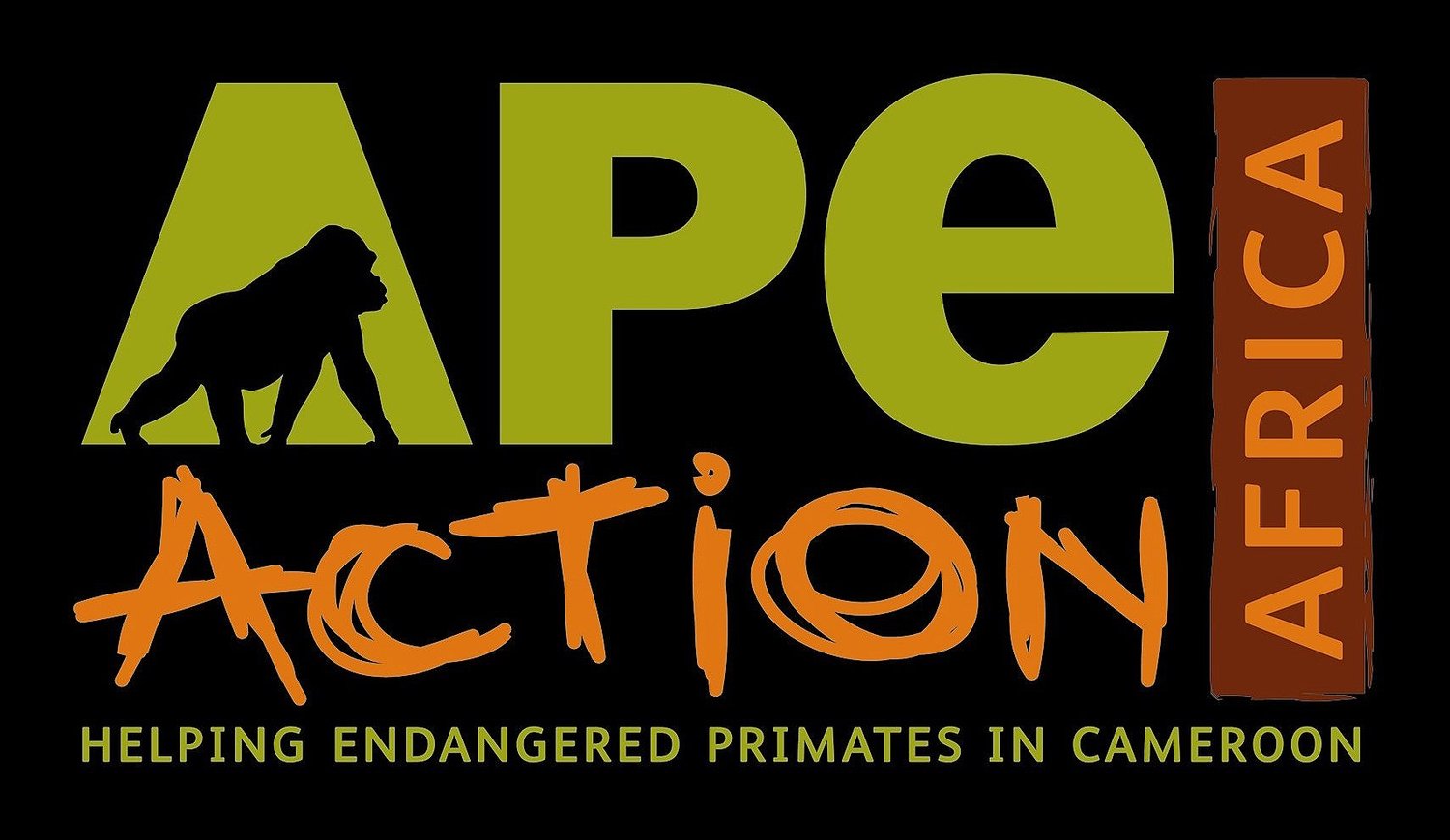Mefou in focus - Big Foot
Nkan Daniel looks on as Shufai and Yeba wrestle, 2008
Adult male gorillas are amongst the largest and most emphatically impressive mammals on Earth. A big silverback might weigh as much as 200kg, reach close to 2m in height, and to stand in his presence, to see his huge arm and pectoral muscles and to hear the unmistakeable pok-a pok-a pok-a pok-a sound of his chest-beat reverberate around a forest is one of those experiences that just never fails to leave you in awe. Nor, were all things to be equal, would it be an experience that could fail to leave we feeble naked apes wondering about our place in the hierarchy of the animal kingdom. Sadly, all things are not equal in the world today.
We humans, the most developed of all the great apes, have armed ourselves with machinery and with guns and have built a system that perpetually demands more, and this continues to come at the cost of our closest cousins on the planet. We chop down trees in wilderness areas in the process opening up new places to human habitation. Activities like farming and hunting follow and precious habitat for wildlife is degraded or destroyed, and as we do this we harm ourselves as much as we do the animals and plants that our activities impact.
Raising the alarm about the deforestation of the world’s tropical forests isn’t new (I recall learning about how much of the Amazon was being lost each year when I was at school more than thirty years ago) but we are clearly at a tipping point now. There has never been a more urgent time to inform yourself about these issues and to ensure that you are doing everything you can to avoid perpetuating habitat and species loss due to your everyday purchasing choices.
Almost all of the gorillas at Mefou are victims of a specific slice of human behaviour that is contributing to a dramatic decline in the world’s wildlife – illegal hunting. For every individual orphan who reaches the safety of sanctuary with Ape Action Africa, it is highly likely that several of his or her family members were slaughtered for their meat and body parts, and these tiny survivors carry the trauma of the violence they have experienced long after arrival at their new home.
When I first volunteered at Mefou there were two groups of gorillas at the sanctuary: a group of adults known as the “big gorillas” and the nursery group, whose enclosure was close to the village and was known as the “gorilla garden”. Thirteen years later there are five groups and, although orphan gorillas arrive at a much slower rate than chimpanzees, they still keep coming.
In 2007, three of the nine nursery group gorillas were young males named Nkan Daniel, Shai and Djanga. Nkan and Shai were gangly teenagers who seemed to spend a lot of time wrestling one another, or occasionally their young caregiver named Thierry, and Djanga was a pudgy juvenile with a happy demeanour and distinctive, squashed nose-print. Fast forward 12 years and these three boys had all developed into impressive silverbacks with a combined weight of 525kg, which posed an issue for Rachel and her team as they would often fight in order to exert their dominance over their group. Various tactics were used to minimise the harm that they did to one another, but it became clear that a permanent fix to the issue was required.
After a huge fundraising effort and another epic building effort by the AAA construction team, a new enclosure was completed at the start of 2019 and a plan was put in place to relocate the three silverbacks to a new bachelor group. The lack of female gorillas in this new group and the huge size of the enclosure would help to ensure that they could live peacefully together. A team of vets travelled from Twycross Zoo in the UK to help with the relocation and I was lucky enough to be there to film and photograph the event.
Main image - Djanga's health-check, 2019
In turn, each of the three silverbacks was anaesthetised, placed on a special hammock, carried by eight people to a pickup truck, driven to the new enclosure, and lifted on to a table for a health check before being carefully deposited into one of the five new satellite cages that adjoin the enclosure. Trying to record all of the action was hectic, but the moves themselves were executed perfectly and within a few hours, the three boys were groggily waking from their sleep in their new home.
I chose the main image that accompanies this blog to depict that day as I like the perspective of Djanga as he lays on the table, which exaggerates his size and might. There are people hidden behind his huge chest, his fingers are curled like a bunch of bananas and that enormous foot dominates the foreground. It is a great reminder of one of the hardest days of work I’ve done at Mefou with my cameras in hand and of all the effort and dedicated work that goes into providing lifetime care to the primates that live there.
- Ian -
If you love what we do to rescue, rehabilitate and care for Cameroon's endangered apes and monkeys, please consider donating to our Giving Day for Apes appeal here. Just $5 makes a difference and could help us to win thousands of dollars in prizes. Every dollar and every donor count, so please give what you can. A Djanga-sized thank you from all of us at Ape Action Africa.



